By Eric Vandenbroeck and co-workers
Arsonist, Killer, Saboteur, Spy
In late January,
barely a week into Donald Trump’s second term, a senior NATO official told members
of the European Parliament that Russia’s intensifying use of hybrid warfare
poses a major threat to the West. In the hearing, James Appathurai,
NATO deputy assistant secretary-general for innovation, hybrid, and cyber,
described “incidents of sabotage taking place across NATO countries throughout
the last couple of years,” including train derailments, arson, attacks on
infrastructure, and even assassination plots against leading industrialists.
Since Russian President Vladimir Putin launched his full-scale war in Ukraine
in 2022, sabotage operations linked to Russian intelligence have been recorded
in 15 countries. Speaking to the press after the January hearing, Appathurai said it was time for NATO to move to a “war
footing” to deal with these escalating attacks.
In the weeks since
then, Trump’s dramatic overtures to Putin have pushed the sabotage campaign
into the background. Instead, in aiming to quickly secure a deal with Russia to
end the war in Ukraine, the Trump administration has talked of a new era of relations
between Washington and Moscow. At the same time, the White House has taken
steps to dismantle efforts within the FBI and the Department of Homeland
Security to counter cyberwarfare, disinformation, and election interference
against the United States—all of which have previously been tied to Moscow.
Indeed, Trump has suggested that Russia can be trusted to uphold any peace deal and that Putin is “going to be more generous than he
has to be.”
But any assumption
that a Trump-Putin deal will cause the Kremlin’s spies and saboteurs to step
back is dangerously mistaken. For one thing, their political masters would not
allow it. Very few in Moscow’s security establishment believe that a durable peace
can be achieved with the United States or the broader West. In February, Fyodor
Lukyanov, head of research at the Valdai Club, a pro-Kremlin think tank, said
that there was no chance for a “second Yalta”—a global deal that would redefine
the borders and spheres of influence in Europe. And Dmitry Suslov, another
prominent voice of Kremlin foreign policy, has said that any thaw in
U.S.-Russian relations would be short-lived and unlikely to survive the U.S.
midterm elections in 2026.
At the same time, in
Russia’s security services, mistrust of American intentions runs deep. For
centuries, Russia has viewed the West as intent on Russia’s subjugation or
outright destruction, and Soviet and Russian intelligence services have
operated for decades on the assumption that the West is an implacable foe. To
Moscow’s spies, Trump’s courting of Putin has provided an opportunity to expand
and strengthen their subversion campaign in Europe. Given the Trump
administration’s skepticism toward NATO and the defense of its transatlantic
allies, a U.S.-Russian agreement could increase Moscow’s
willingness to launch unconventional attacks in Europe.
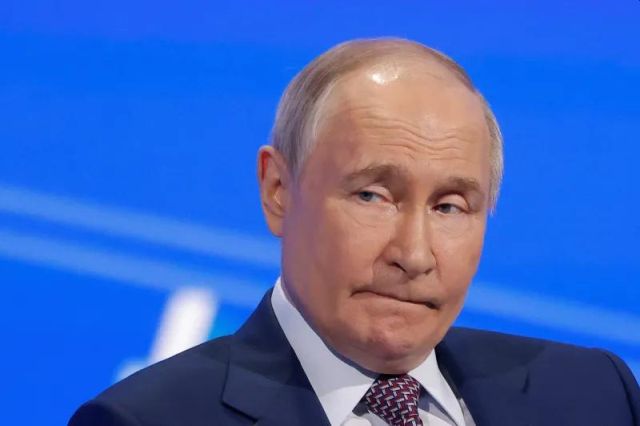
Russian President Vladimir Putin, Moscow, March 2025
After three years of
full-scale war in Ukraine, Russia’s spy agencies are now fully mobilized in
Europe and have built sabotage and hybrid warfare into a comprehensive
strategy. These attacks are not merely designed to keep European governments
off-kilter. They also aim to diminish Europeans’ support for Ukraine by raising
costs on the governments and industries in ways that are not easy to counter,
harassing the population, and seeking vulnerabilities in European defense.
Unless the West is prepared to develop a cohesive strategy to counter those
attacks with a signal strong enough to serve as an effective deterrent, Moscow
will see little downside to accelerating this campaign in any post-deal future.
Moscow’s New Killers
Ever since Russia’s
annexation of Crimea in 2014, Moscow’s spy agencies have been experimenting
with sabotage operations abroad as a way to pressure
the West. At first, this included occasional attacks, such as the blowing up,
by agents of Russia’s GRU military intelligence agency, of ammunition depots in
the Czech Republic that had been supplying Ukrainian forces then fighting
Russia in the Donbas. After its 2022 invasion of Ukraine stalled, Moscow was at
first cut off from the West, with its diplomats expelled and its spies forced
to regroup. But in 2023, its intelligence services, including the Federal
Security Service, or FSB, the Foreign Intelligence Service, or SVR, and the
GRU, began redeploying in Europe in what became a new kind of hybrid warfare campaign.
So far, the most
brazen operation was Russia’s attempted assassination in the spring of 2024 of
Armin Papperger, the head of Rheinmetall, Germany’s
largest arms manufacturer. The plot was thwarted by German and American
intelligence services, as Appathurai, the NATO hybrid
warfare official, publicly confirmed in January. In his testimony, Appathurai noted that there have been “other plots” against
European industry leaders, as well. This threat seems unlikely to go away:
notably, along with other European defense companies, Rheinmetall is likely to
play an even larger role in arming Ukraine in a post-deal future, and its
growth projections have surged since the Trump administration has come to
power.
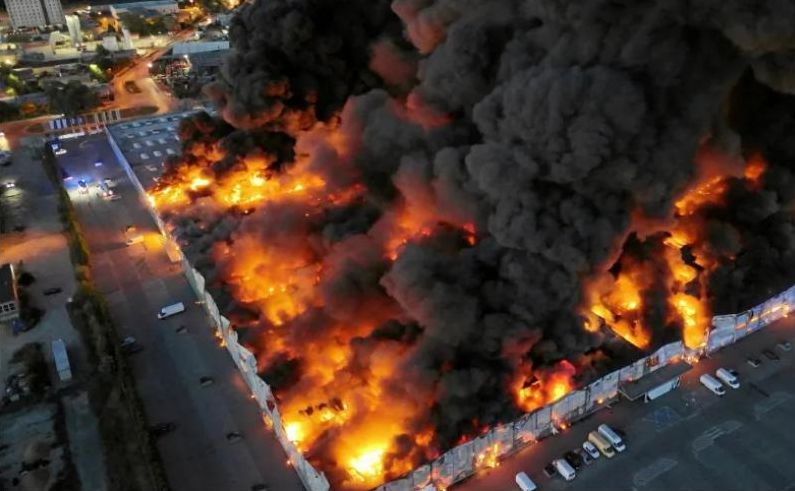
A shopping Center after a Russia-linked arson attack,
Warsaw, May 2024
In his January
testimony, Appathurai also confirmed that Russia has
been recruiting “criminal gangs or unwitting youth or migrants” to
conduct many of these operations. In March 2024, for example, two British men
were arrested for setting fire to a Ukrainian-linked parcel delivery warehouse
in east London—an attack that was connected to the Wagner paramilitary company,
traditionally a front for the Russian military intelligence agency. One reason
for this is that local criminals could be recruited via social media for
one-off jobs without even knowing who they are working for, making it more
difficult to counter, and it became harder to infiltrate Russian nationals into
these countries.
In addition to
targeting European infrastructure and military logistics, Moscow’s spy agencies
may also be seeking to use sabotage operations to influence the political
landscape in target countries. In the run-up to Germany’s federal election in
February, for example, there was a series of attacks against civilians in
Germany by Afghans and other immigrants. According to a senior German
intelligence official we spoke to shortly before the election, the German
agencies believed that Russian security agents may have instigated these
attacks in order to inflate support for the far right,
which opposes German support for Ukraine.
These attacks don’t
necessarily have to be violent to be effective. For example, there are
indications that Russian agencies could use social media to recruit teenagers,
including those belonging to post-Soviet diasporas, to spray hateful slogans on
the walls of apartment buildings in neighborhoods with a significant migrant
population, threatening or humiliating locals to incite hatred against refugees
from Ukraine or Syria. These attacks don’t require much preparation and may
cost only a few thousand dollars. More ambitious recruits might be paid to
undertake more violent actions, such as committing arson or throwing Molotov
cocktails.
European intelligence
officials believe that Germany, along with Poland and the UK, will remain one
of Moscow’s primary targets. Given the country’s large immigrant population
from former Soviet republics, including Russia and Ukraine, and the rising tensions
about immigration, Russia’s spy agencies may see particular potential for
influencing the political situation and public opinion. Moreover, given
incoming Chancellor Friedrich Merz’s commitment to dramatically increase German
defense spending and its role in Western security, the Kremlin may have an even
greater incentive to try to destabilize the country.
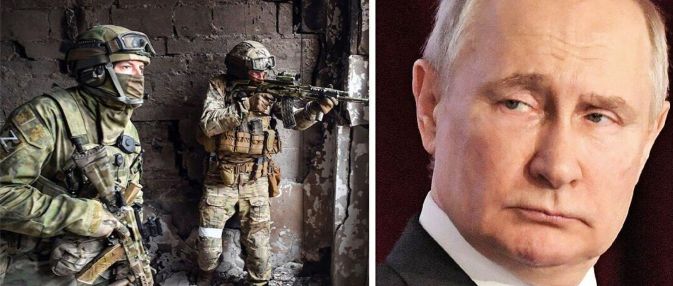
Hostage Games
Another element of
Russia’s emerging strategy is its growing use of hostages. Never
before have foreigners with European and American passports been seized
as extensively in Russia as they are now. Since the start of the invasion,
Russia’s Federal Security Service has begun arresting numerous citizens of
target countries under various pretexts—such as discovering a piece of gum with
cannabis in a purse or finding a donation of a few hundred dollars to a
Ukrainian charity on the victim’s smartphone.
During the Cold War, the
business of prisoner swaps was mostly limited to quiet exchanges between rival
Western and Soviet spy agencies that happened on the sidelines of geopolitics.
For instance, the KGB did not bring spy swaps to the Strategic Arms Limitation
Talks (SALT) between U.S. President Richard Nixon and Soviet leader Leonid
Brezhnev. Since the war in Ukraine began, that has changed. Following the
negotiations over the release of detained American basketball star Brittney
Griner, Russian intelligence agencies—especially the SVR and the FSB—have
recognized that hostage trades can powerfully affect public opinion in target
countries. As a result, Moscow has turned captured foreigners, including from
France and Germany as well as the United States, into a substantial form of
leverage in geopolitical negotiations.
Now, the role of
Russia’s spy agencies in capturing and trading hostages is becoming
institutionalized. The FSB emerged as a backchannel between the United States
and Russia several years ago, so it is no surprise that it played a major role
in talks for the release of American journalist Evan Gershkovich in 2024.
Indeed, Sergei Naryshkin, the head of the SVR, has been involved in such
negotiations with Washington for quite some time, including in 2022, when then
CIA director William Burns met Naryshkin in Ankara. Among the items on the
agenda for that meeting, alongside the use of nuclear weapons, was the issue of
U.S. prisoners in Russia.
More recently, when
Kremlin officials held preliminary talks with Trump administration officials in
Riyadh about a Ukraine deal, Naryshkin was included on the Russian side,
presumably, among other things, to make use of the hostage issue. Notably,
those talks were preceded by the release of American teacher Marc Fogel, who
had been detained in Russia for possessing medical cannabis; in a public
ceremony, Trump touted Fogel’s return and greeted him at the White House.
Indeed, hostage swaps draw on some of the quid-pro-quo dynamics that Trump
prefers in his approach to dealmaking, making it all the more
likely that Russia will continue to accumulate Western prisoners. On March 11,
Naryshkin had his first phone conversation with Trump’s CIA director, John
Ratliff, and according to Russia’s state news agency, TASS, the two agreed to
“maintain a regular contact.”
More Darkness, More Deception
Since 2022, Russia’s
intelligence agencies have also linked the sabotage option firmly with their
more long-standing campaign of transnational repression. The Kremlin has a very
long tradition of using various tools against its enemies and opposition members
in exile, often in the same countries where it is now practicing sabotage,
including Germany, the UK, and the Baltic countries. Russia’s secret police may
have the dubious honor of having invented transnational repression: beginning
in the second half of the nineteenth century, tsarist secret police infiltrated
and harassed Russian political émigrés in France and Switzerland. Their Soviet
successors significantly escalated those tactics, up to and including political
assassinations. Since the early years of this century, Putin’s spies have done
the same, attacking opposition figures who have sought refuge abroad.
But now Russia’s
transnational repression is becoming more sophisticated and often involves
efforts to deflect blame toward other parties. In early February, for example,
the SVR publicly accused Ukraine’s intelligence agencies of “preparing attacks”
against Russian opposition or business figures who have sought refuge abroad.
The SVR asserted that the would-be attackers, in the event of arrest, would
“blame the Russian special services, allegedly on whose orders these attacks
were prepared.”
The Russian exile
communities across Europe quickly grasped the significance of this
announcement: the SVR was laying the groundwork for a new round of attacks on
Russian exiles, with the blame being placed on Ukraine
in advance. Moscow’s practice of blaming Ukraine for Russian operations in the
West seems only likely to expand. From now on, these attacks, including
assassination attempts, arson, and attacks on infrastructure, will likely be
blamed on Ukrainian intelligence in an effort to turn
European public opinion against Ukraine.
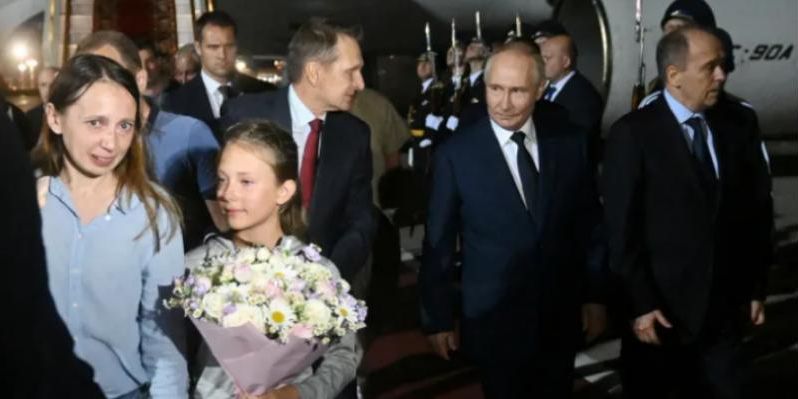
Putin with intelligence chiefs after a prisoner
exchange, Moscow, August 2024
These efforts suggest
a change in Russian strategy. For several years after 2016, Moscow’s
intelligence agents seemed to be increasingly brazen and sloppy, as if they did
not really care about being exposed or caught. Consider the Russian assassin on
a bicycle who shot a Chechen separatist in the center of Berlin in broad
daylight and was almost immediately arrested by German police while he was
dumping his pistol and his bike in the nearby river Spree. To some extent,
Russian operatives like him didn’t care: they were determined to show, by their
brazen actions, that Western efforts to expose and criminally charge them were
not working.
Now, however, the spy
agencies are switching back to a more secretive mode. The war in Ukraine has
made it harder for Russians to set up their own operations in Europe, and the
recent changes in spy tradecraft—such as outsourcing operations to European nationals
for one-off jobs, out of the established spy networks in the target
countries—have helped them get around this.
In his notes he had
smuggled from Moscow, KGB archivist and defector Vasili Mitrokhin described the
Soviets’ meticulous preparations in the 1960s for a sabotage attack on the NATO
Integrated Air Defense site on Mount Parnitha, near Athens. The chosen method
for disabling it was arson using technical devices developed by the KGB’s “F”
Service laboratory. These devices were disguised as Greek-style cigarette
packs, containing highly flammable charges that could be ignited at any time
using built-in mechanisms, accounting for the rarefied air. The operation would
require, of course, several highly trained special forces operators. If this
attack ever took place, it would have been difficult not to attribute it to a
hostile state.
This was the same
model used by Putin during his early years in power. In the first decade of
this century, when Russian spy agencies carried out assassinations abroad,
those attacks had an obvious Russian state signature, as when the attackers used polonium, or the military-grade nerve agent
Novichok. But this is no longer the case. Most of the sabotage operations the
Kremlin has launched over the past two years lack direct traces to Russia. Many
also involve local perpetrators who have been recruited via social media for
one-off jobs for a few hundred dollars.
Turning a Blind Eye
Despite overwhelming
evidence that the Kremlin has developed a systematic and increasingly lethal
hybrid warfare strategy, Western leaders have failed to devise an adequate
strategy for containing it. For now, the naming and shaming tactics that the
United States and its European allies adopted after Russia’s interference in
the 2016 U.S. election remain a significant part of the Western response.
In November 2024, a
London court put on trial a group of Bulgarians who had been charged with
spying for Russian agencies—including surveilling the U.S. military base in
Stuttgart where the Ukrainian military was believed to be trained, planning an
attack at the Kazakh embassy in London, and attacking two investigative
journalists opposing the Kremlin, as well as a Kazakh politician in exile in
London. In early March, the defendants were all found guilty in what has become
a larger effort to expose and punish those who collude with Moscow. Some
European countries also seem to be attempting to reduce the effect of sabotage
attacks carried out by Russian agents, by denying or downplaying their scale.
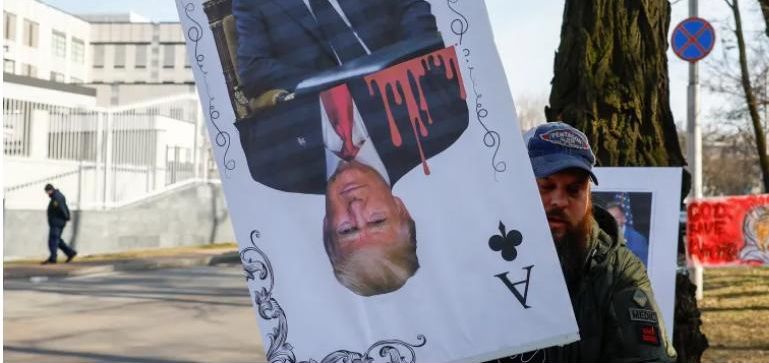
Protesting in front of the U.S. embassy, Kyiv, March
2025
More promising are
recent efforts to double down on security. Several European countries, for
example, have taken new measures to protect telecommunication cables,
pipelines, and other critical infrastructure in the Baltics, near Russia. This
includes the launch in January of a British-led reaction system to track
potential threats to undersea infrastructure and to monitor the Russian shadow
fleet—aging and poorly maintained vessels operating with flags of convenience
and murky ownership and management—as part of the ten-nation-strong Joint
Expeditionary Force.
But the turmoil
within the U.S. intelligence community caused by Trump’s reorientation toward
Moscow has made it more difficult to shape a comprehensive Western response.
Public reports of the Trump administration’s buyout offer to members of the CIA
have been met with glee in Russia. Meanwhile, the administration has set new
priorities for U.S. intelligence—including targeting drug cartels in Mexico and
focusing more on China—rather than on Russia and support for Ukraine. For
Moscow’s spy agencies, these moves could be exploited as opportunities to
increase their activities in the West.
If Trump’s moves lead
to a dramatic decline in surveilling Russia, it will not be the first time the
U.S. intelligence community will have taken its eye off the ball. In the 1990s,
after the end of the Cold War, there was a similar shift in attention away from
Russia, one that resulted in a significant loss of expertise in Russian affairs
and an underestimation of risks on the part of Washington. This intelligence decline very likely contributed to the West’s misjudging of
Putin during his early years in power, when he laid the foundations for renewed
Russian autocracy and confrontation with Europe and the United States. It would
be disastrous to repeat the same mistake today.
For updates click hompage here